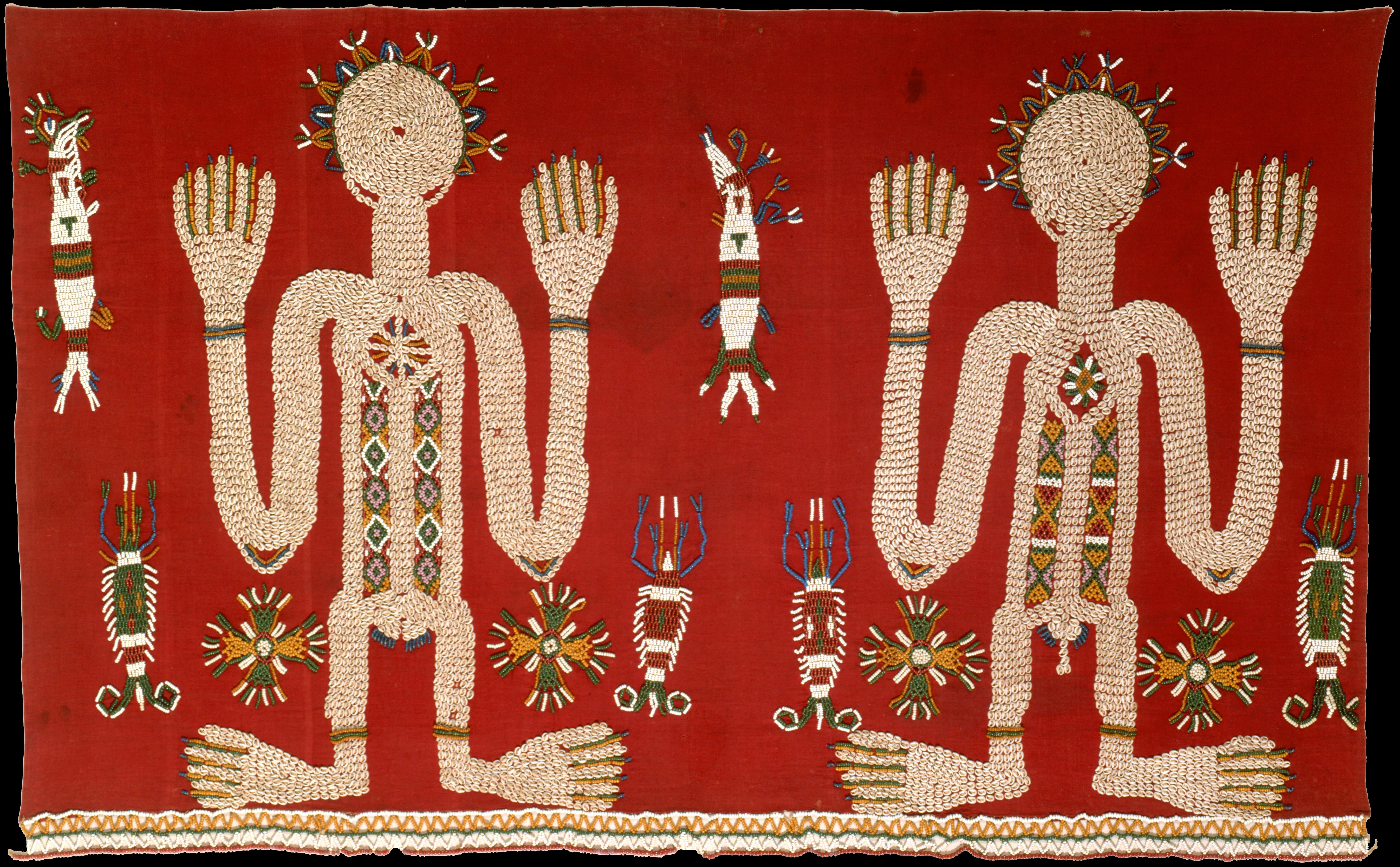
Woman’s ceremonial skirt (lau hada) about 1900.
Long ago, when the sun and moon made the Earth, they had two children. They resembled their mothers, respectively, and their names were Tlal and Zul.
Tlal glided over the land, a wave of the greenest foliage and the most beautiful flowers. Zul had a great purple flame atop of their shoulders, and their body was draped in the darkest blue velvet.
Together, they created all life on Earth. But there came a time when their creations would grow pale and wither. Tlal would sink the corpses into the soil, and from it, massive fruit trees would spring up.
Fascinated by what her hands did, Zul felt like there should be more to life after they’ve faded. They traveled into the Earth, to the end of the longest root of all the trees, and made a great temple.
There, they took out a peach seed they had taken with them and broke it in half. They kissed each half of the seed and then placed them on the floor of the temple.
From the halves, two beings sprouted. One of them having long dark hair, like a flowing river of blood. Her gown white yet colorful, with the light bouncing off of her gem details.
The other, with similar hair color but glossy and short. He had a short cape that floated to the back of his elbows. Zul named them Tecuhtli and Tecacíhuatl. They named their temple Mictlan.
Zul brought them up to the surface and showed them how to collect the souls of the dead and bring them back to Mictlan, where they would exist for the rest of their deaths.
It’s said that when Tecacíhuatl collected her first soul, she cried so much, it caused the Earth’s first rain. It’s also said that it’s because she’s collected a soul nearby every time it rains.
Tecuhtli, on the other hand, escorts souls with warmth to Mictlan. He smiles because it’s no longer dark and cold under the soil. He and Tecacíhuatl aren’t alone in the grand temple anymore.
Tecacíhuatl cries for everyone and everything because she thinks life is precious and beautiful. And she’s upset that the faces of such beautiful creations are reduced to orbs of glowing color.
Tecuhtli thinks that Tecacíhuatl will scare the souls of living creatures with her tears, so he accompanies those souls instead. But he’s never querulous by her mood.
He has never told her that crying for these souls is futile—one: because it isn’t. And two: because she can help create new life every time she brings rain to the Earth.
And so, to please Tecacíhuatl, the beings on Earth have created a celebratory holiday to make creations that depict the happiness that life brings them and place them on the grave of loved ones.
On this holiday, Tecacíhuatl rises from the soil to take these artworks and bring them to Mictlan to decorate the temple and show passed souls that their families are alright.
Diana Meneses is a sophomore in the Cartooning department at the School of Visual Arts. She has this to say about her poem: "Los Dos Parcas" is a ballad consisting of my characters with a twist of Aztec mythology and Dia de los Muertos mixed in. I love including my Mexican culture into my work. As a child of immigrants, I take pride in it!"

